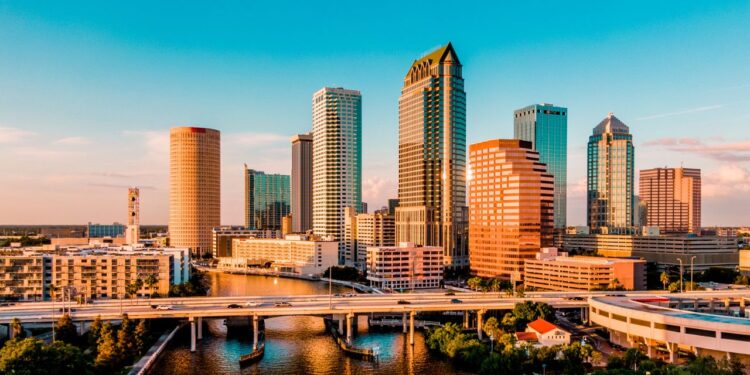Offices once thrived off of busy central business districts, with workers from all walks of life driving activity to these hubs.
However, as the concept of the Nowhere Office takes hold, offices have become less essential to business longevity. While it will always play a role in the global workforce, downtowns are now having to pivot in order to boost movement.
Across the 10 largest cities in the U.S., office occupancy has sat under half of levels seen in 2020 prior to the pandemic. Although there has been some progress in filling up offices, it is unlikely that occupancy will ever look the same.
Even New York City Mayor Eric Adam recently admitted that there may not be any more central business districts due to the rise of remote working.
For downtowns, this spells trouble. Now, city planners are trying to find creative ways to not only pandemic-proof these regions, but also address other crises such as natural disasters and affordability.
Even as more people return to cities after excursions to the outskirts during the pandemic, rising rent is once again making these areas unaffordable. As a result, conversions of older office buildings and hotels have grown in popularity in order to provide affordable housing, while developing what planners call a 15-minute city.
The concept of a 15-minute city involves creating mini neighborhoods within cities, where residents can have easy access to retail, grocery stores, schools, work, parks and more.
Versatility will be key as downtowns adjust to the future of work, and by providing workers with everything they need in one location, these districts may be able to recover.


 Dr. Gleb Tsipursky – The Office Whisperer
Dr. Gleb Tsipursky – The Office Whisperer Nirit Cohen – WorkFutures
Nirit Cohen – WorkFutures Angela Howard – Culture Expert
Angela Howard – Culture Expert Drew Jones – Design & Innovation
Drew Jones – Design & Innovation Jonathan Price – CRE & Flex Expert
Jonathan Price – CRE & Flex Expert











